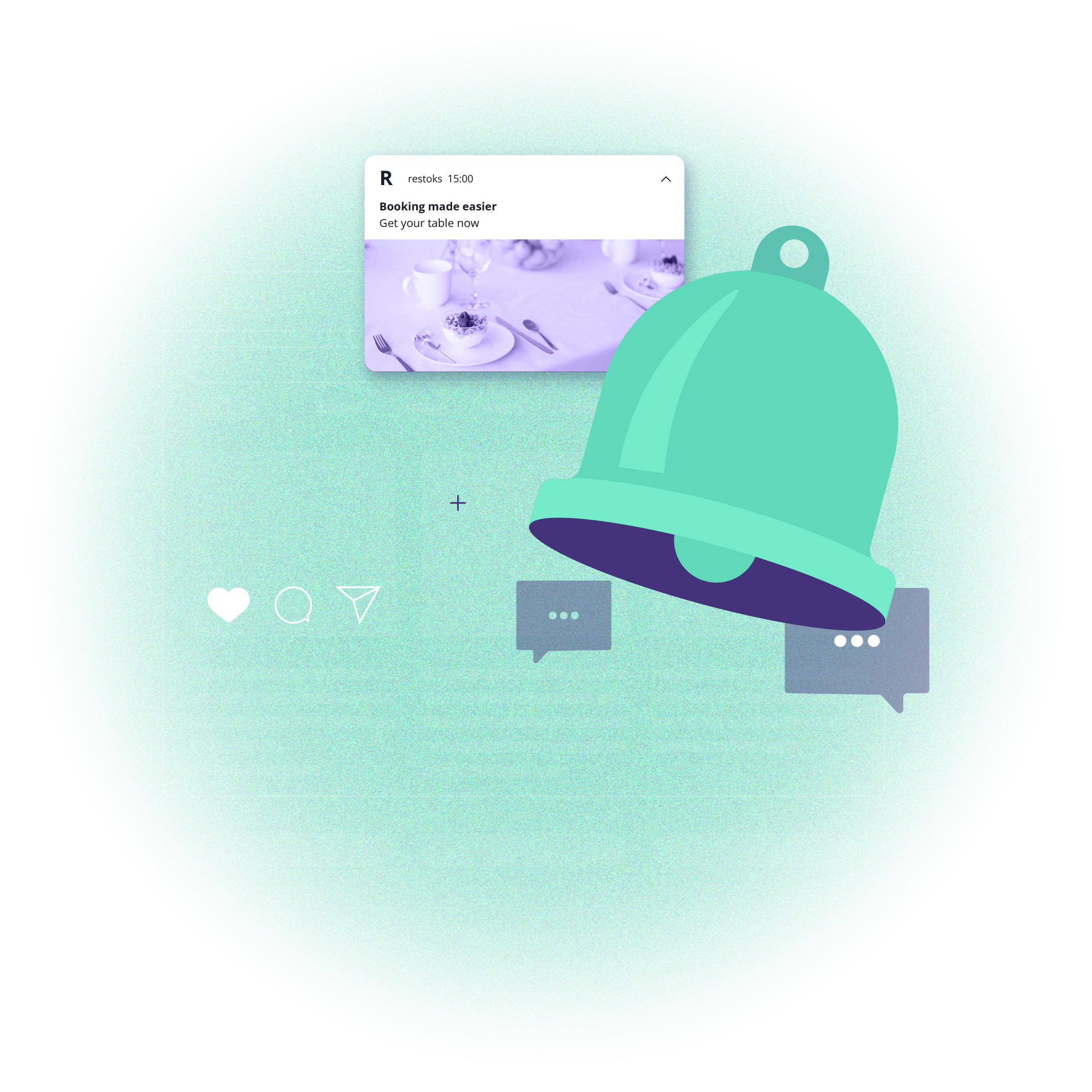Web push notifications on mobile and desktop: market reach (prt. 1)


Web push notifications on mobile and desktop: market reach (prt. 1)


Web push notifications are small permission-based messages that are sent to a user in the browser after he/she previously gave consent to receive them. Notifications can be sent on desktop as well as mobile devices. And in order to receive them there is no need to have your site open - an open browser, even in the background, is enough to get a web push message.
Unfortunately, there is no standardized view of web push notifications. Their appearance depends on the device, operating system or browser. And probably while preparing the campaign you’ve asked yourself:
- how will this notification look on the screens of my recipients?
- on which place of the screen web push notification will be displayed?
- will all the text of my message be visible?
- will subscribers see the action button? Will they see one action button or two?
- will subscribers see the big image?
Firstly, before we answer those questions, let's talk about web push market reach and distribution of subscribers in different industries per device type, operating system and browsers they use.
Web push notifications market reach
The more operating systems and browsers support web push notifications, the higher is its' market reach.
In addition, the look of web push notifications is defined by the device, operating system and browser user used to subscribe. It means that the same notification will look differently on Windows, macOS or Android as well as Chrome or Safari, for example.
Speaking about device type, here is what PushPushGo data shows:
| Web push notifications subscribers distribution based on device type per industry [PushPushGo, July 2021] | |||||
| E-commerce | Publishing | Finance | Telecom | Travel | |
| Mobile | 76,3% | 88,0% | 65,4% | 73,5% | 68,1% |
| Desktop | 22,4% | 10,5% | 33,6% | 25,4% | 29,9% |
| Tablet | 1,3% | 1,5% | 1,0% | 1,1% | 1,9% |
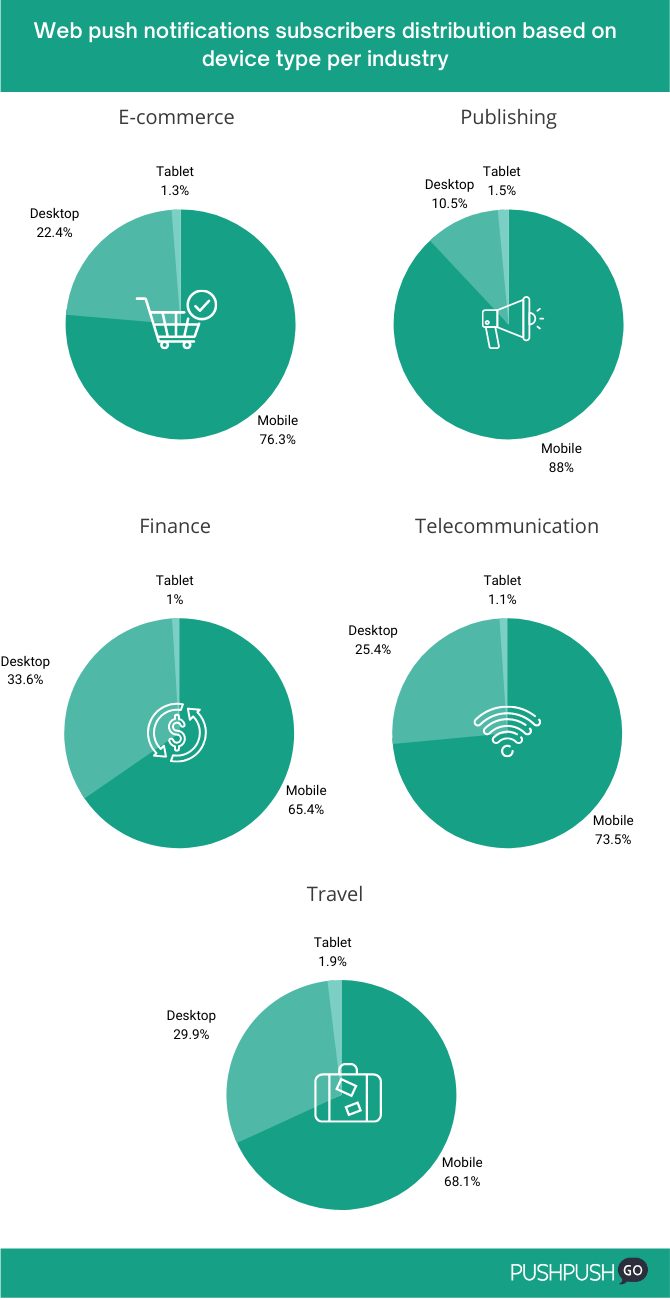
As we see the definite leaders among web push subscribers are mobile devices followed by desktop.
In order to prepare the notification that looks great on the screens of your subscribers, it is also important to know which browsers and OS are most popular among users.
Web push notifications and operating systems
Web push notifications are supported by almost all popular operating systems and browsers.
Operating systems that support web push notifications are Windows, Mac OS (OS X), Linux/Ubuntu.
The only exception is iOS that at the moment doesn’t support web push technology and, even though it is quite an expected feature by many developers and website owners, there is no information on when or if it will be available in the near future.
According to Statcounter, in June 2021 iOS market share was 16,07%, staying behind Android (41,46%) and Windows (30,61%). MacOS or OS X had 6,52% of the market and Linux - 1,13%.
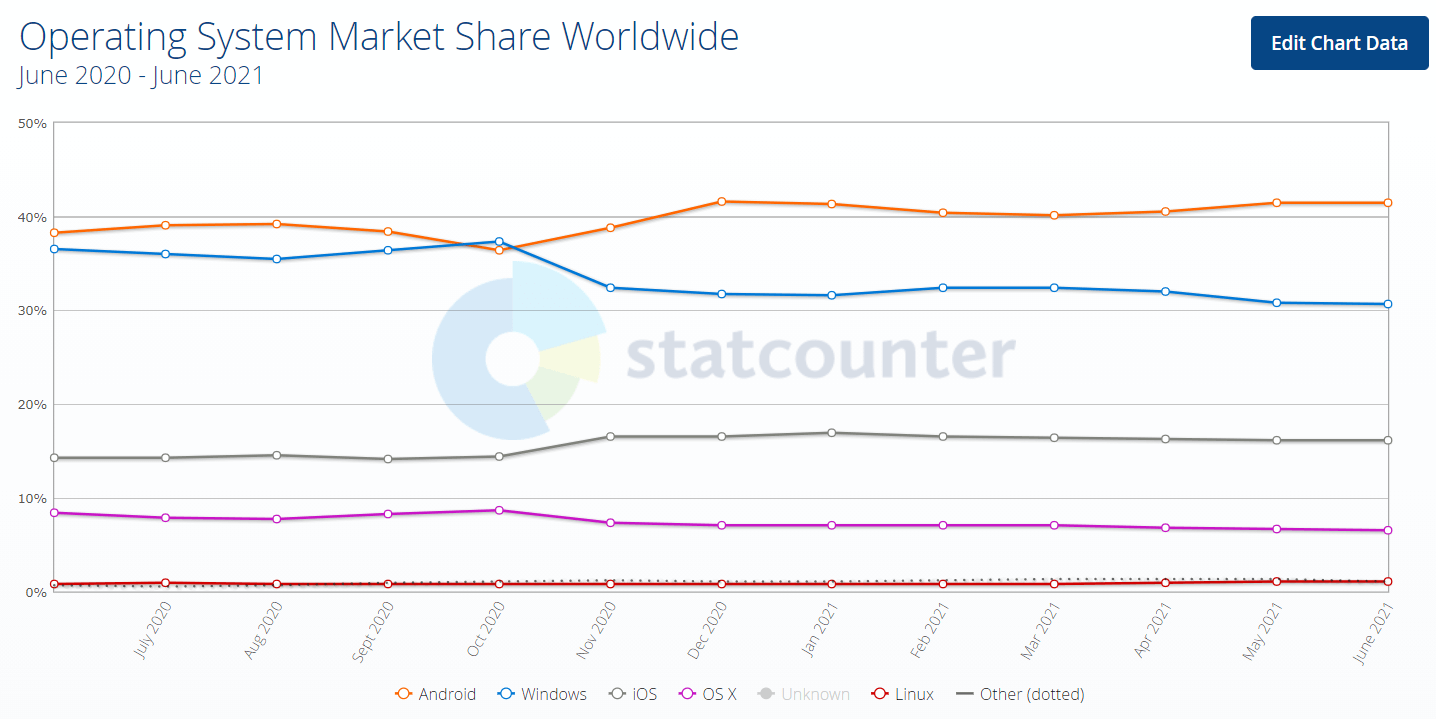
So, the potential web push notifications market reach is about 79,72%.
Speaking about the distribution of operating systems among web push subscribers in different industries, based on the data collected by PushPushGo (July 2021), here are interesting statistics:
| Web push notifications subscribers distribution based on the operating system per industry [PushPushGo, July 2021] | |||||
| E-commerce | Publishing | Finance | Telecom | Travel | |
| Android | 78,6% | 90,3% | 66,8% | 74,9% | 70,6% |
| Windows | 19,8% | 9,1% | 31,1% | 23,9% | 28,0% |
| macOS | 1,1% | - | 1,5% | 0,6% | 1,1% |
| Linux | - | - | - | 0,4% | - |
| Others | 0,5% | 0,6% | 0,6% | 0,2% | 0,4% |
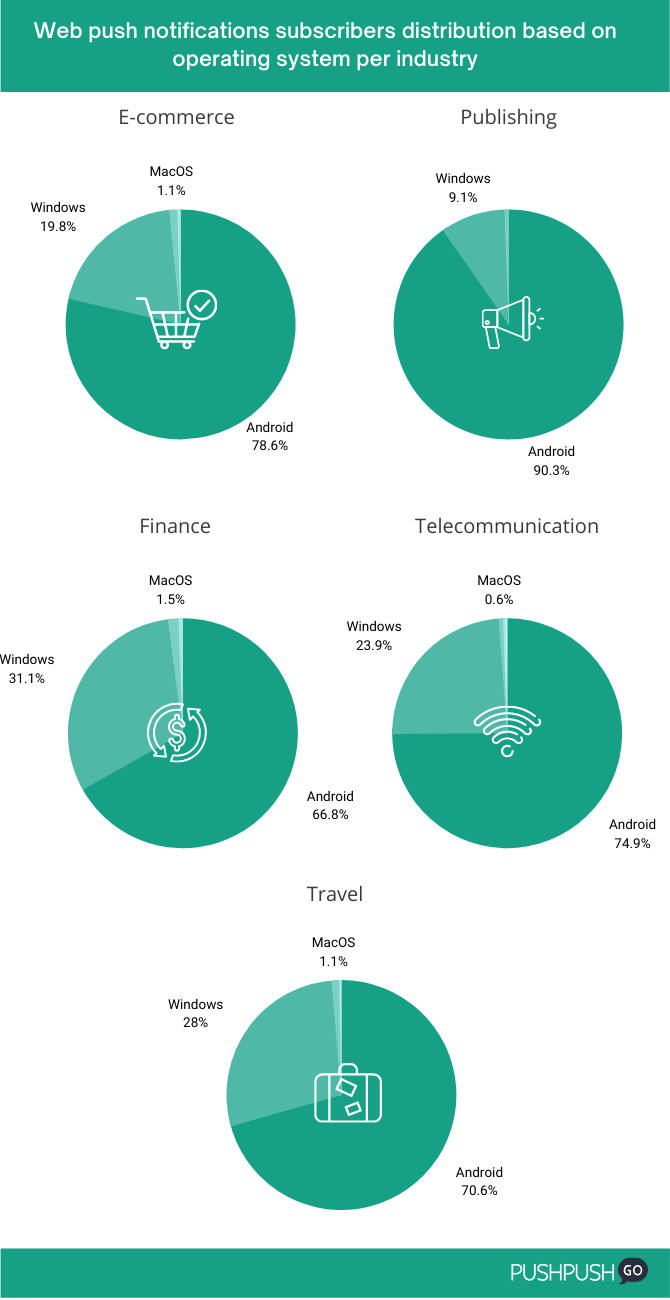
As we can see Android and Windows are the most common operating systems among web push subscribers in every industry.
Web push notifications and Internet browsers
All popular browsers support web push notifications unless they are installed on iOS.
According to Statcounter, the biggest popularity among users has Google Chrome browser (65,27% of market share), followed by Safari (18,34%), Edge (3,4%), Firefox (3,29%), Samsung Internet (3,18%) and Opera (2,19%).
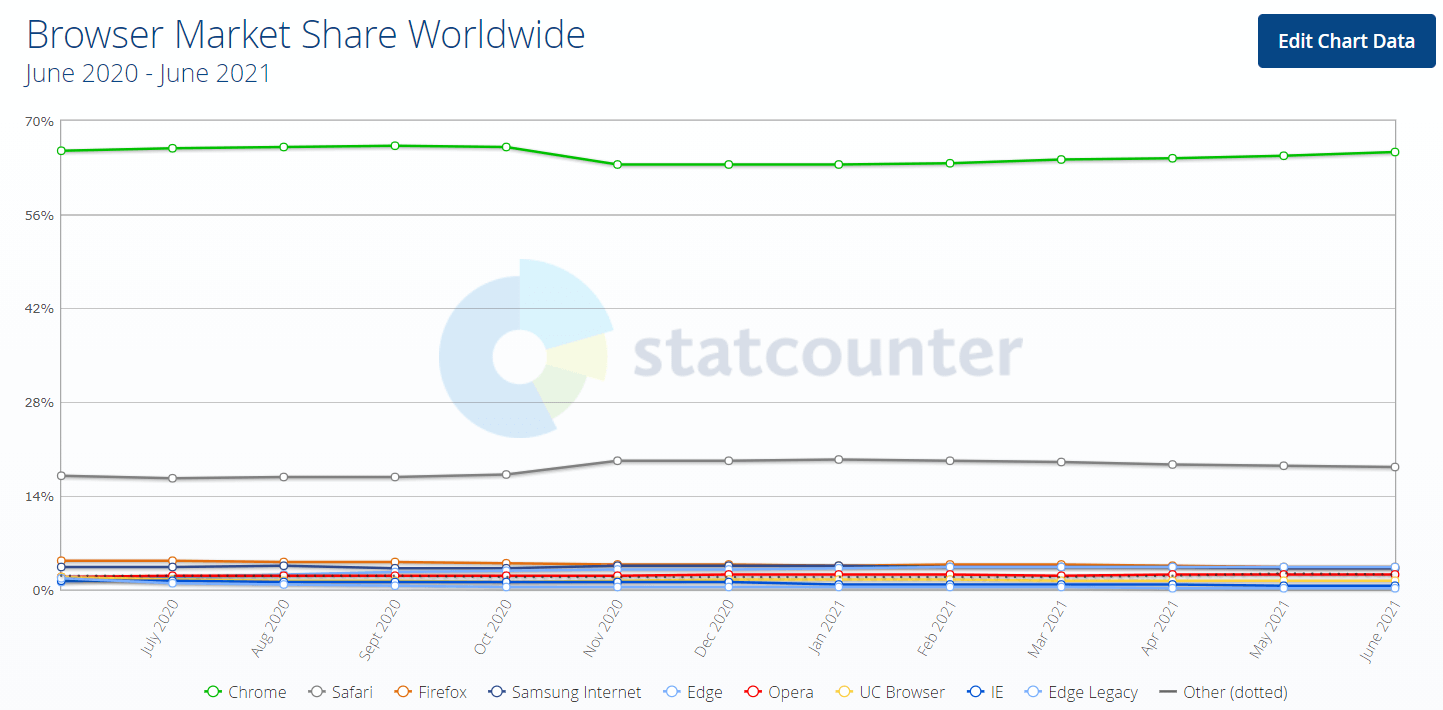
According to the data that PushPushGo collected about browsers that web push subscribers use in different industries, Google Chrome and Samsung browsers are the most popular.
Let’s have a look what are the shares of particular browsers in different sectors:
| Web push notifications subscribers distribution based on browser per industry [PushPushGo, July 2021] | |||||
| E-commerce | Publishing | Finance | Telecom | Travel | |
| Chrome | 85,9% | 90,8% | 83,9% | 82,1% | 81,8% |
| Samsung Internet | 8,4% | 5,7% | 9,1% | 11,8% | 9,0% |
| Firefox | 1,9% | 1,3% | 1,7% | 1,7% | 5,4% |
| Opera | 1,7% | 1,2% | 1,7% | 1,7% | 1,9% |
| Edge | 1,7% | 0,8% | 3,3% | 1,8% | 1,9% |
| Others | 0,4% | 0,2% | 0,3% | 1,0% | 0,1% |
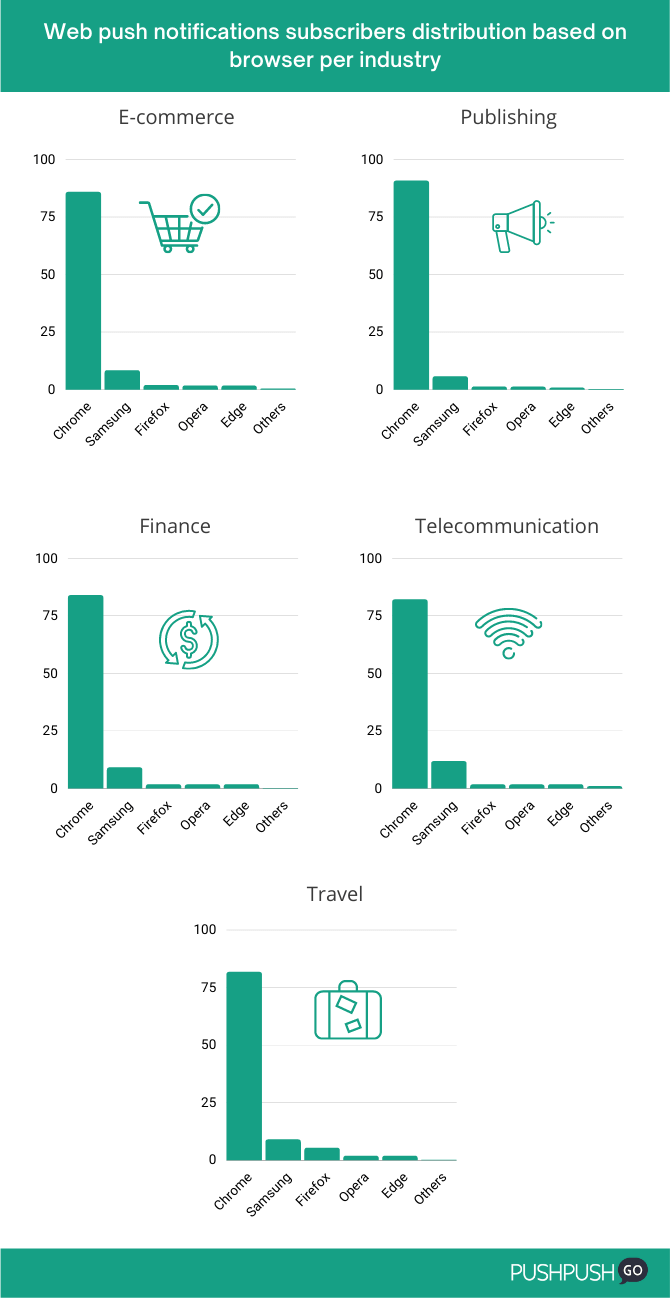
Of course, in order to check out browsers and/or operating systems distribution particularly for your website visitors, you can use Google Analytics.
If you already have your PushPushGo account, you can also find information there about the OS, browser or device type of your subscribers.
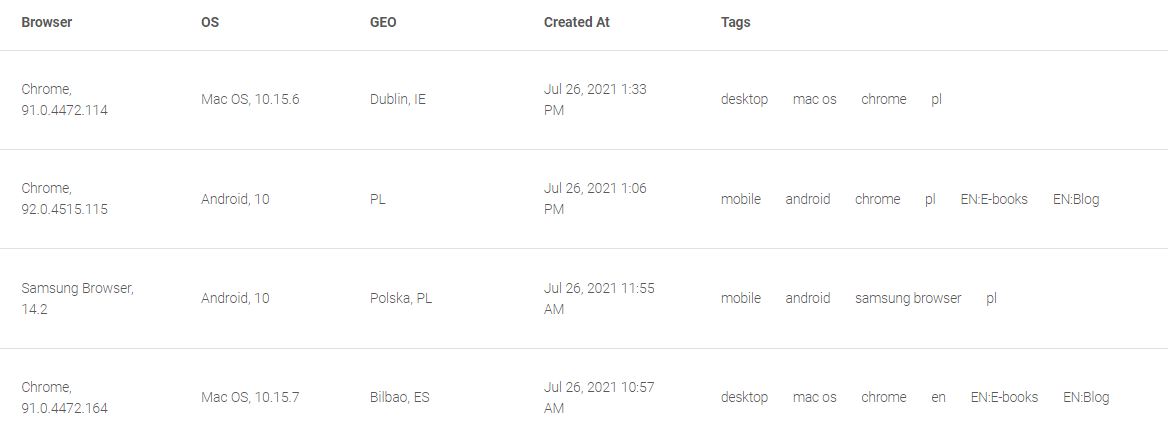
Summing up
The market reach of web push notifications (about 80%) shows that the potential of this technology is huge.
Based on the data collected by PushPushGo the most common device among web push subscribers in every analyzed industry is mobile, the most common operating systems are Android followed by Windows and the most popular browser is Google Chrome.

